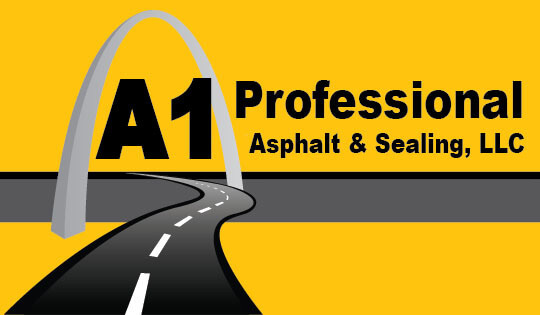The Ultimate Guide To A1 Professional Asphalt & Sealing Llc
The Ultimate Guide To A1 Professional Asphalt & Sealing Llc
Blog Article
A1 Professional Asphalt & Sealing Llc for Dummies
Table of ContentsAn Unbiased View of A1 Professional Asphalt & Sealing LlcThe Only Guide for A1 Professional Asphalt & Sealing Llc4 Simple Techniques For A1 Professional Asphalt & Sealing Llc4 Simple Techniques For A1 Professional Asphalt & Sealing LlcFascination About A1 Professional Asphalt & Sealing Llc

The oil in a vehicle engine is not just oil. It consists of a selection of additives to improve the car's performance. These consist of polymers, viscosity modifiers, heat stabilizers, additional lubes, and put on additives. The REOB consists of all the additives that were in the waste oil in addition to the wear steels from the engine (generally iron and copper).
By making numerous blends utilizing different REOB examples and various asphalt binders, the variants greatly can be balanced out. Numerous States supplied examples of recognized REOB make-up to TFHRC scientists, that analyzed the samples to compare the portion of added (understood) REOB to the discovered (examined) quantity. The evaluations revealed a similar percent of included and found REOB.
The Best Guide To A1 Professional Asphalt & Sealing Llc
None of those States realized that the asphalt they were acquiring consisted of REOB. One State insisted its samples had no REOB - https://disqus.com/by/disqus_4YBmBsXG7m/about/.
Of the 1,532 examples checked, 12 percent included REOB, and some contained appreciably high degrees of it at 1020 percent. The highest possible level was 34 percent in a sample from Texas, which TxDOT had actually utilized in a patching compound. This screening additionally exposed the presence of phosphoric acid in 11 percent of the examples, and 2 percent included ground tire rubber.
2 years earlier at TRB's annual conference, the Federal scientists held an REOB workshop and presented the searchings for of their research laboratory examinations to a standing room-only crowd. Although some agencies do not especially prohibit REOB, they do enforce physical tests that preclude its useeffectively a restriction. a1 asphalt. Others do not outlaw it by spec, yet have arrangements with asphalt providers to stay clear of the usage of REOB
A Biased View of A1 Professional Asphalt & Sealing Llc
A handful do allow REOB, some within specific restrictions. Ohio and Texas restriction degrees to much less than 5 percent of the asphalt. To create a trusted examination technique that all States can make use of, the TFHRC scientists established a round-robin examination strategy. The individuals are 11 State freeway agencies (Illinois, Massachusetts, Minnesota, Mississippi, Montana, North Carolina, Oklahoma, South Carolina, Texas, Vermont, and Wyoming), 2 independent testing labs, the Ministry of Transport in Ontario, Queen's University in Ontario, and an Ontario paving service provider.
In total, the researchers prepared and delivered 720 blends. The individuals are checking the samples individually using the guidelines offered by the TFHRC researchers. The round-robin testing is virtually finished, and TFHRC remains in the process of gathering the results. The output will certainly be a recommended AASHTO examination technique that any type of State can embrace and use (a1 professional).
The pavement with REOB, which lies 0.6 mile (1 kilometer) from the pavement without REOB, has identical subgrade, website traffic density, and climate. Nonetheless, the section of Highway655 with 5 to 10 percent REOB revealed considerable breaking. In this example, the existence of REOB was the recognized source of splitting at a low temperatures.
"In our experience in Canada, also little amounts of 23 percent can be an issue." Similarly, a section of examination pavement in Minnesota (MN1-4) discovered to include REOB additionally broke too soon. The pavement executed well for the first 3 to 4 years, yet then began to fracture. This pavement is likewise based on low temperatures.
10 Easy Facts About A1 Professional Asphalt & Sealing Llc Shown
The tests were not comprehensive, however they showed that at levels of 6 percent or more, the tensile toughness of the asphalt dropped significantly. At a level of 3.5 percent REOB, the variation in the physical examination methods was higher than the effect of REOB. It was hard for scientists to examine whether REOB was existing. https://www.dreamstime.com/a1asphaltsealng_info.

One binder specification taken into consideration is the distinction between the low temperature critical specification temperature for stiffness (S) in the flexing light beam rheometer and the bending beam of light rheometer creep slope (m-value) noted as Tcritical. TC = TC (S) TC (m-value). Assessment of this parameter is still ongoing. 2 independent research study teams, one from AASHTO and the other from the Asphalt Institute, ended that even more research study is needed on the use of REOB in asphalt.
Previously, all asphalt screening measured design buildings such as tightness. These tests do not reveal what materials had her explanation been added to the asphalt.

Some Known Incorrect Statements About A1 Professional Asphalt & Sealing Llc
These results demonstrate there are weaknesses in the standard design screening procedures that may be exploited. The producer may have an economic advantage and the item passes all the standard tests, but the item might not be valuable to making sure long-lasting performance. To resolve this concern and the growth of new asphalt additives and extenders, TFHRC is beginning a research study program to utilize handheld spectroscopic tools, x-ray fluorescence spectroscopy, and Fourier change infrared spectroscopy to allow analyses to be carried out in the field as opposed to needing to take samples back to the lab.
Report this page